This is another blog in the series on equipment used. Check out earlier blogs on Waterproof inks, Watercolour papers, Paints and look out for one I’ll soon be publishing on brushes.
Personal Preference
As mentioned before, choosing your equipment can be quite a personal choice. We develop loyalty to brands and types of drawing tool over the years, and just because it becomes our favourite shouldn’t mean everyone should be expected to feel the same.
This is particularly true for pencils. Personally, I love using mechanical pencils. However, I know some illustrators and artists, even within the field of botanical illustration, loathe them.
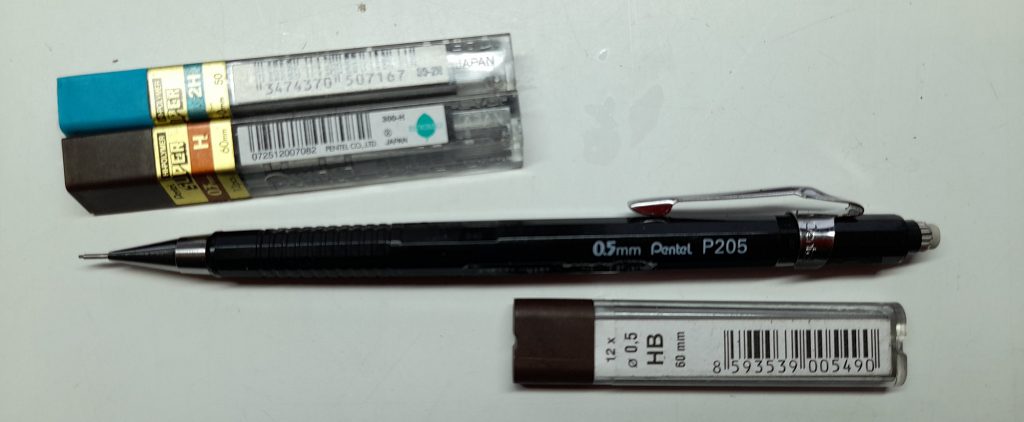
Pentel P205 pencil with 0.5mm H and HB replacement leads
Why Mechanical pencils?
So why do I love them?
Well, for one thing they give a sharp and clean line. This is important when you’re trying to record precise details, such as hairs on a stem. Because the nib itself is sharp it lays down less graphite, so there’s less grey dust to get smudged across the page.
I love the speedy way you can sharpen them; literally, just push hard on the edge of the lead, it snaps, and you have a perfect sharp nib again. You barely have to stop drawing, let along scrabble about for a pencil sharpener.
These sharp lines are also really helpful in producing “pencil roughs”, a pencil drawing of the subject. These get emailed off to the client who can ask for adjustments (or a total re-draw) and means mistakes get picked up before you’ve opened the paint box. Pencil can be rubbed out. Watercolour cannot.
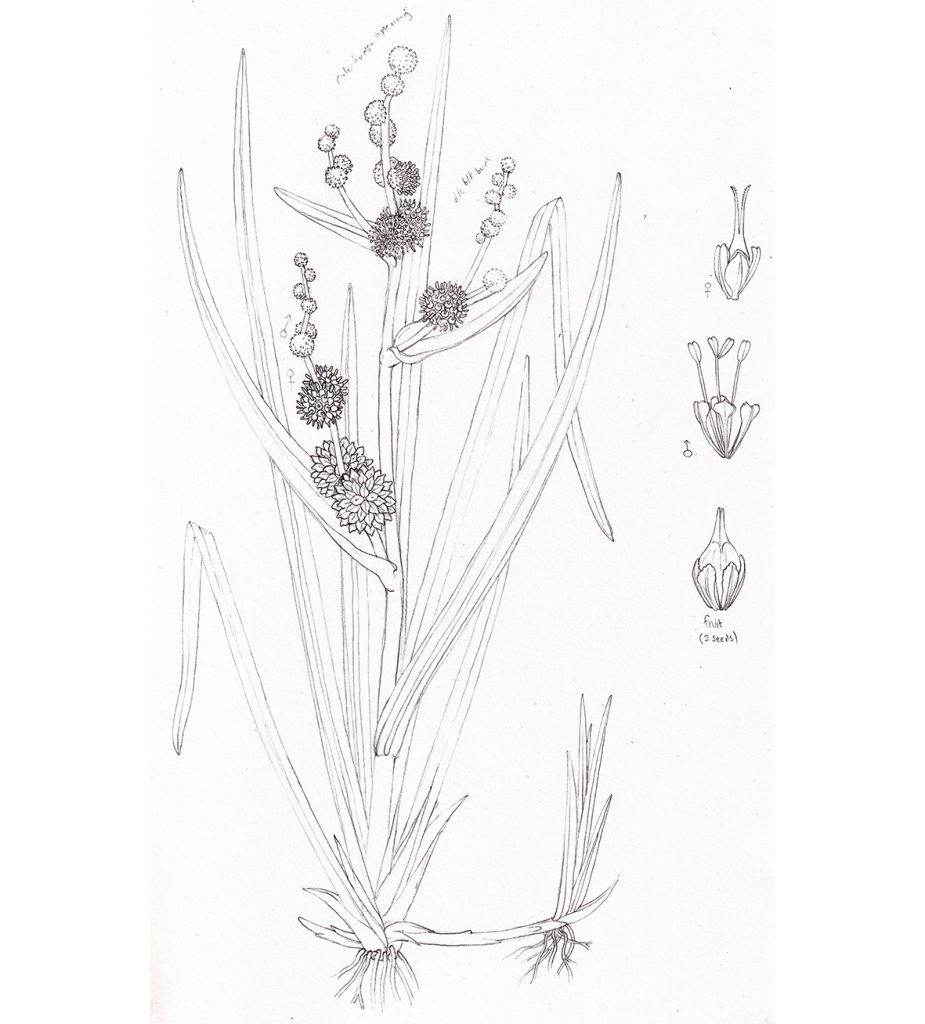
Pencil rough illustration of Branched Bur-reed Sparganium erectum
I realise that if you were looking for deep shadows and soft edges, mechanical pencils might not be ideal. However, I’ve learned how to get quite a depth of tonality from these pencils. As always, the line is darker if you press harder.
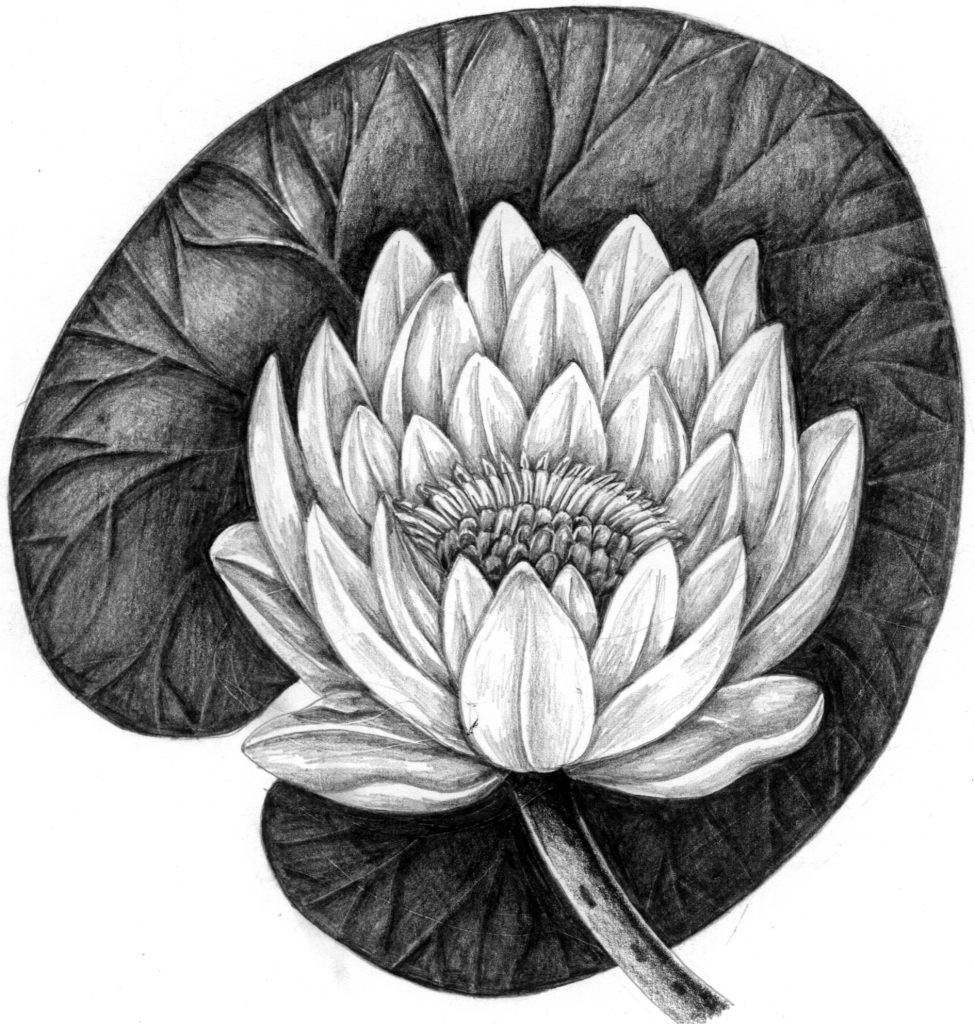
Finished pencil illustration of White waterlily Nymphaea alba
What brand and leads to use?
Again, this is quite a personal choice.
I have always used, and am wedded to, the Pentel P205. I’m not alone in this passion as Ian Hedley’s blog shows. (This blog also has lots of technical information on the structure of the pencil).
I use quite a hard lead, either HB or H. My preferred width is 0.5mm (hence the “5” in P205).
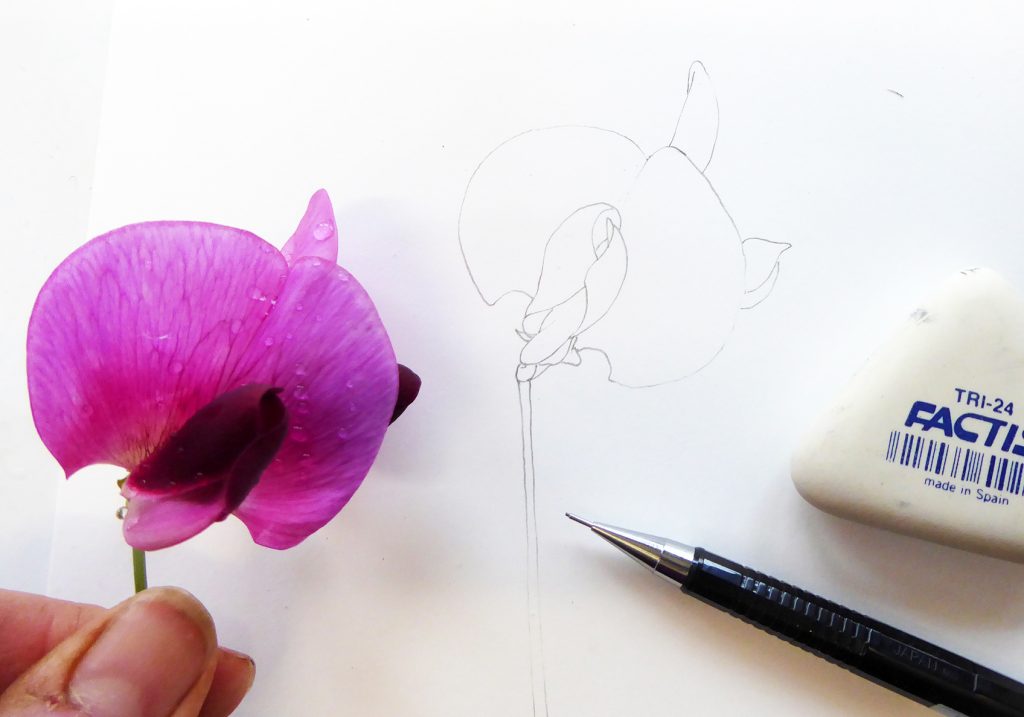
Specimen and pencil line drawing of everlasting sweet pea Lathyrus latifolius
I also like the fact that these pencils can rub-out easily (depending on paper). I use them on hotpress watercolour paper as well as on cartridge paper.
I asked K.T. from Goldspot pens (who wrote a recent guest blog on waterproof inks) for other suggestions to add to the list:
“I also love the Pentel 205! But there are several other mechanical pencil brands that draw and write wonderfully that I’d be honored to mention. One of my favorites is the Kaweco Sport mechanical pencil. The Kaweco AC Sport and Kaweco Al Sport are also great options in the Kaweco line of mechanical pencils. The luxurious pen brand Caran d’Ache also has beautifully functional mechanical pens for $5 up-to $500 (believe it or not!).
The Staedtler pen brand has tons of great, cheap options that draw and write incredibly. Their Micro 775 and Micro 774 are incredible drawing and drafting pens for architects and sketch artists.”
A note on Cartridge paper
Lots of heavy-weight papers are good to use. Ones which can take a certain amount of erasing, and are heavy enough not to rumple or crease are prefect.
I use Daler-Rowney Smooth-Heavyweight paper (220g / 135lb) which seems to be widely available. This paper can even take a certain amount of watercolour, and is great for pencil and ink.
Choosing an eraser
I can’t count the number of times I’ve used a rubber (eraser) and had it feel really hard, and smear the pencil instead of removing it. It’s also easy to damage the page with a rubber that’s too rough.
About 15 years ago I started using Factis triangle Tri-24 erasers and they’re now my go-to choice. They’re cheap, soft, and effective.

Factis erasers
I also use them when erasing pencil lines from below finished watercolour (yes, that’s something you can do, if your hotpress watercolour paper is tough and smooth enough!) and when rubbing out pencil guide lines of a finished pen and ink piece. Sometimes you have to press pretty hard to get the pencil off completely, but it usually works and I’m yet to damage a dry illustration with these rubbers.
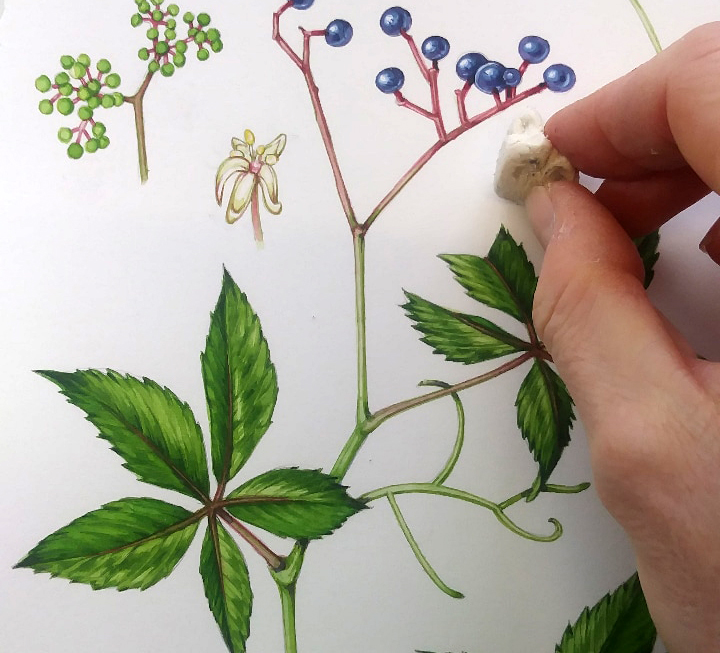
False Virginia Creeper, rubbing out the pencil rough drawing under the paint
Conclusion
In conclusion, I’m going to stress again that the choice of materials is in no way mandatory, but a personal matter. This blog describes the tools I’ve come to love and rely on, but I’d encourage people to ask around, try different brands and pencils, and see what feels best.
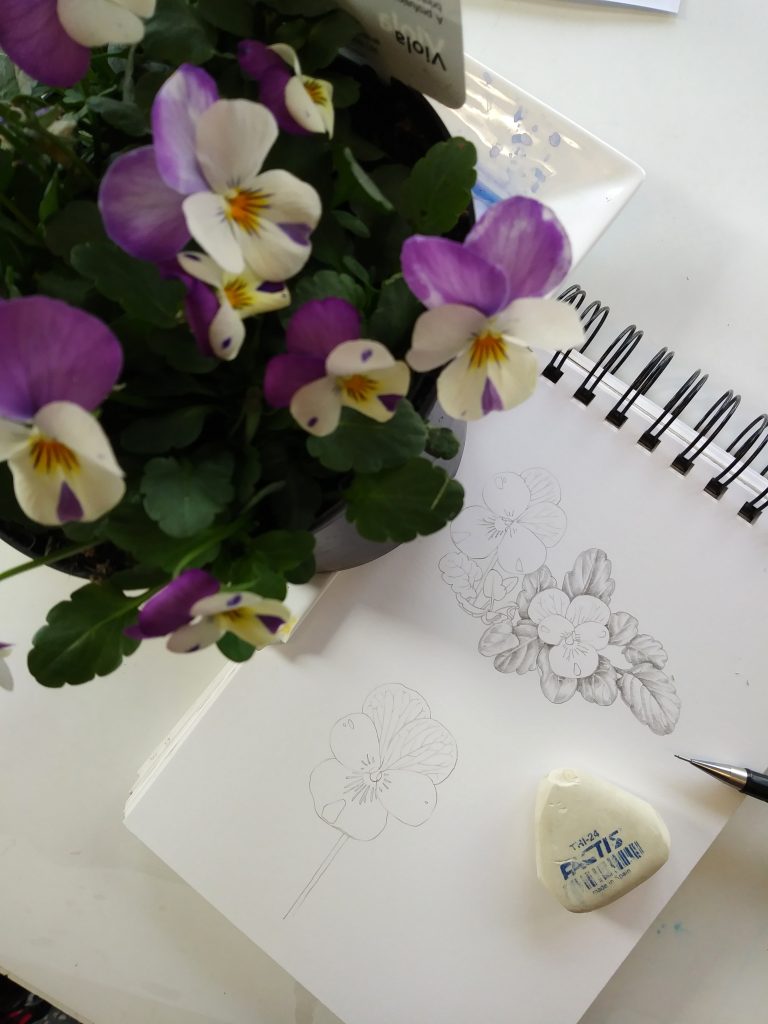
Pansy with pencil illustration
Stockists will vary depending on where you’re based. If you can support your local art shop, please do. If that’s not easy, or their stock is limited, then larger art suppliers have good online provision. In the UK, I favour Jackson’s art, Cass Art, London Graphic Centre, and Ken Bromley. I haven’t lived in the USA for many years, but know that Dick Blick are a good supplier.
Ideally, I’d love people to feel free to use the comments section to talk about their favourite pencils, cartridge paper, and rubbers. It’d be a lovely resource for people starting out and wondering where to begin, or for seasoned illustrators and artists to find new ideas and equipment.
The post Equipment: Pencils & Erasers appeared first on Lizzie Harper.






